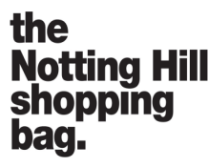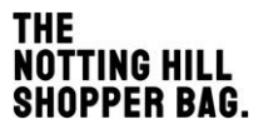In brief
- Dissolved company assets become Crown property: When a company is dissolved, IP assets automatically transfer to the Crown as 'bona vacantia' (vacant assets) unless they are properly dealt with beforehand.
- Restoration pitfalls: Restoring a dissolved company to reclaim assets is complex and error prone. Assets may be lost permanently if not handled correctly - for example, assets may be put up by the Crown for auction, or a trade mark can expire.
- Assignment requirements for goodwill: Goodwill must remain in the same ownership as, and can only be assigned with, the business to which it relates.
- Narrow copyright protection for simple logos: Simple logos are likely to only have a narrow scope of protection, meaning only close copies will infringe, even if the evidence shows that the alleged copier sought to emulate the copyright work.
Background
The UK's Intellectual Property Enterprise Court (IPEC) has handed down its decision in a trade mark infringement, passing off and copyright infringement claim brought by Natasha Courtenay-Smith and Notting Hill Bag Company Limited (NHBC) against two brothers and their respective companies, The Notting Hill Shopping Bag Company Limited and The Notting Hill Shopper Bag Ltd for allegedly copying a logo which was used on tote bags.
In or around 2008/9, Ms Courtenay-Smith designed a logo (as set out below), which was registered as a trade mark in May 2013 through her company, The Notting Hill Shopping Bag Company Limited (TNHSBC), in respect of various bags.

In or around 2010, her tote bags featuring the logo "captured the zeitgeist and drew interest from the world of celebrity", as the judge put it. They were covered in the mainstream press and also presented to the now Princess of Wales in 2012.
From around November 2022, the defendants started selling tote bags which featured the following sign:

Ms Courtenay-Smith claimed the sign infringed her copyright in the logo and NHBC claimed trade mark infringement and passing off.
IPEC decision
No trade mark infringement and bona vacantia
The court held that NHBC did not own the trade mark and therefore did not have standing to bring the trade mark infringement claim. The claim essentially failed because of various procedural errors when the original owner of the mark, TNHSBC, had been dissolved and restored.
- In 2018, Ms Courtenay-Smith had dissolved TNHSBC voluntarily, positively and deliberately (as opposed to forced dissolution, e.g. on insolvency), and there was no evidence of an intention to ever restore it. Before dissolution, the evidence demonstrated that the trade mark and goodwill in the business had not been assigned to NHBC - despite the claimants claiming it had been, or that there was an intention to do so. Therefore, those assets automatically passed as bona vacantia to the Crown (under section 1012(1) of the Companies Act 2006).
- It is possible to restore a company so that it is treated as having continued and not been dissolved, and that company can seek to reacquire assets that passed to the Crown on dissolution. Ms Courtenay-Smith made an application to restore TNHSBC to the Companies House register in October 2023, on the basis that she wished to transfer the trade mark to her. However, there was no valid trade mark to re-vest in TNHSBC because it had expired in May 2023. Trade marks must be renewed every 10 years, otherwise they will be removed from the trade mark register.
- Prior to this, in March 2023, NHBC had applied to renew the trade mark before it expired. It claimed to have standing to do so on the basis that it had acquired a beneficial interest in and/or had been assigned the trade mark prior to TNHSBC's dissolution, however there was no evidence of this. The court found that NHBC did not have standing to renew the trade mark because it was owned by the Crown at the relevant time, and the Bona Vacantia Department did not authorise its renewal (and does not authorise the renewal of any trade mark). As the renewal application was void for lack of standing, the trade mark had duly expired.
No passing off
To establish its claim for passing off, NHBC had to prove that it had goodwill in the logo, that there had been a misrepresentation by the defendants, and that this had caused NHBC damage. However, NHBC could not establish sufficient goodwill in the logo, so its claim failed at the first hurdle.
The court held that:
- Any goodwill that had accrued to TNHSBC was destroyed upon its dissolution, which had been voluntary and deliberate, and there had been no assignment of this goodwill to NHBC prior to the dissolution.
- Goodwill could not be assigned 'in gross', i.e. on its own, without the underlying business changing hands, which it had not.
- NHBC also argued that it had built up goodwill by virtue of its own trade, but there was a lack of evidence to support this in that it had a limited social media presence, had provided inadequate financial information to support the figures claimed, and there was a lack of evidence of sales to the public.
No copyright infringement
Despite finding that copyright protected the logo, the court held that the defendants' sign did not infringe that copyright because the scope of protection was narrow (applying THJ v Sheridan), meaning only a close copy would infringe, which the sign was not.
The court held that the creativity in the logo was low - only the following were the result of creative choices:
- The lower case 't';
- The full stop;
- The use of the left justified 4 lines of text;
- No dot over the 'i' in 'shopping'; and
- Using Arial font.
The logo was not unique, nor did it demonstrate a high degree of creativity, and the use of a place name as two of the five words significantly reduced the creative elements. The court ignored the words themselves when considering subsistence because the logo would not make sense if the words were reordered, and this limited the creative choices in relation to the layout.
Despite concluding that the defendants had deliberately used the same company names and very similar branding, the court concluded that their sign had not copied a substantial part of the logo - the visual differences were striking, and the sign was not a 'close copy' because it:
- Did not feature three of the creative elements used in the logo;
- Used the word 'shopper' instead of 'shopping';
- Is made up entirely of capital letters; and
- Used a different font.
Takeaways
When looking at the logo and the sign, some may think the outcome of the case is an unfair result as the evidence appeared to point to the defendants having copied, or at least taken heavy inspiration from, the logo.
What this case demonstrates, therefore, is the importance of record keeping and understanding what assets you have, where ownership lies, and keeping track of renewal deadlines. Also, think carefully if you want to dissolve a company or are trying to undo a company dissolution to reclaim assets, and make sure that you get advice on the best way to do this.
This case also shows the difficulty in protecting simple logos where place names are involved – while copyright can subsist, protection may not be as wide as hoped.
One other takeaway from the case related to assessment of joint liability. As the court had rejected the claims, there was no need to assess whether the defendants were jointly liable. However, the judge criticised this in the claim for lack of sufficient particularisation – even if infringement had been found, there would not have been joint liability. This is a reminder to rightsholders following the Supreme Court decision in Lifestyle Equities v Ahmed to ensure that the essential facts said to demonstrate a common design between defendants are fully particularised in pleadings.